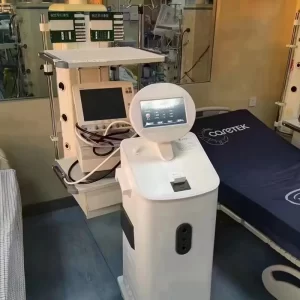The Growing Concern of Medical Equipment Disinfection
In recent years, with the continuous advancement of medical technology, the use of medical equipment in surgeries has become increasingly widespread. However, the issue of medical equipment disinfection has always been a cause for concern, especially when dealing with patients with infectious diseases.
The Risk of Medical Equipment Contamination
Medical equipment plays a crucial role in surgical procedures, but they are also susceptible to contamination by microorganisms. Improper disinfection processes can lead to cross-infection among patients, posing a threat to surgical safety. According to guidance from the Chinese Journal of Anesthesiology, anesthesia machines or respiratory circuits are prone to microbial contamination, making disinfection work particularly important.
Disinfection Frequency for Patients with Infectious Diseases
1. Airborne Infectious Diseases
For patients undergoing surgery with airborne infectious diseases such as tuberculosis, measles, or rubella, it is recommended to use an anesthesia respiratory circuit disinfection machine to thoroughly disinfect medical equipment after each surgery to eliminate potential pathogens.
2. Non-airborne Infectious Diseases
For patients with non-airborne infectious diseases such as HIV/AIDS, syphilis, or hepatitis undergoing surgery, the same recommendation applies to use an anesthesia respiratory circuit disinfection machine for comprehensive equipment disinfection after each surgery to ensure that the equipment does not become a medium for pathogen transmission.
3. Handling Medical Equipment in Viral Infections
Handling medical equipment for patients with viral infections requires extra caution. It is recommended to follow these steps:
Disassembly and Sending to Disinfection Room: After using medical devices, the internal circuit components should be disassembled and sent to the hospital's disinfection supply room. These components will undergo routine sterilization to ensure thorough cleaning.
Assembly and Secondary Disinfection: After routine sterilization, the disassembled components are reassembled into medical equipment. Then, a secondary disinfection using an anesthesia respiratory circuit disinfection machine is performed. The purpose of this step is to ensure effective killing of resistant pathogens such as viruses, safeguarding surgical safety.

4. Patients without Infectious Diseases
For patients without infectious diseases, there is no significant difference in the microbial contamination level of the respiratory circuit within 1 to 7 days after using medical equipment. However, there is a noticeable increase after exceeding 7 days of use, so it is recommended to disinfect every 10 days.
Ensuring the Effectiveness of Medical Equipment Disinfection
To ensure the effectiveness of medical equipment disinfection, several points need special attention:
Professional Training: Operators of medical equipment need to undergo professional training to understand the correct disinfection procedures and techniques.
Strict Time Control: Disinfection time and frequency should be strictly controlled to ensure that all pathogens are effectively killed.
Quality Control: Regular inspection of the quality of medical equipment disinfection to ensure compliance and effectiveness of the process.
Medical equipment disinfection is crucial for the surgical safety of patients with infectious diseases. Taking the correct disinfection measures to ensure that internal equipment pipelines do not become pathways for pathogen transmission is an important task in the field of healthcare. Only through scientific disinfection procedures and strict quality control can we safeguard patient health and contribute to the development of the medical field.